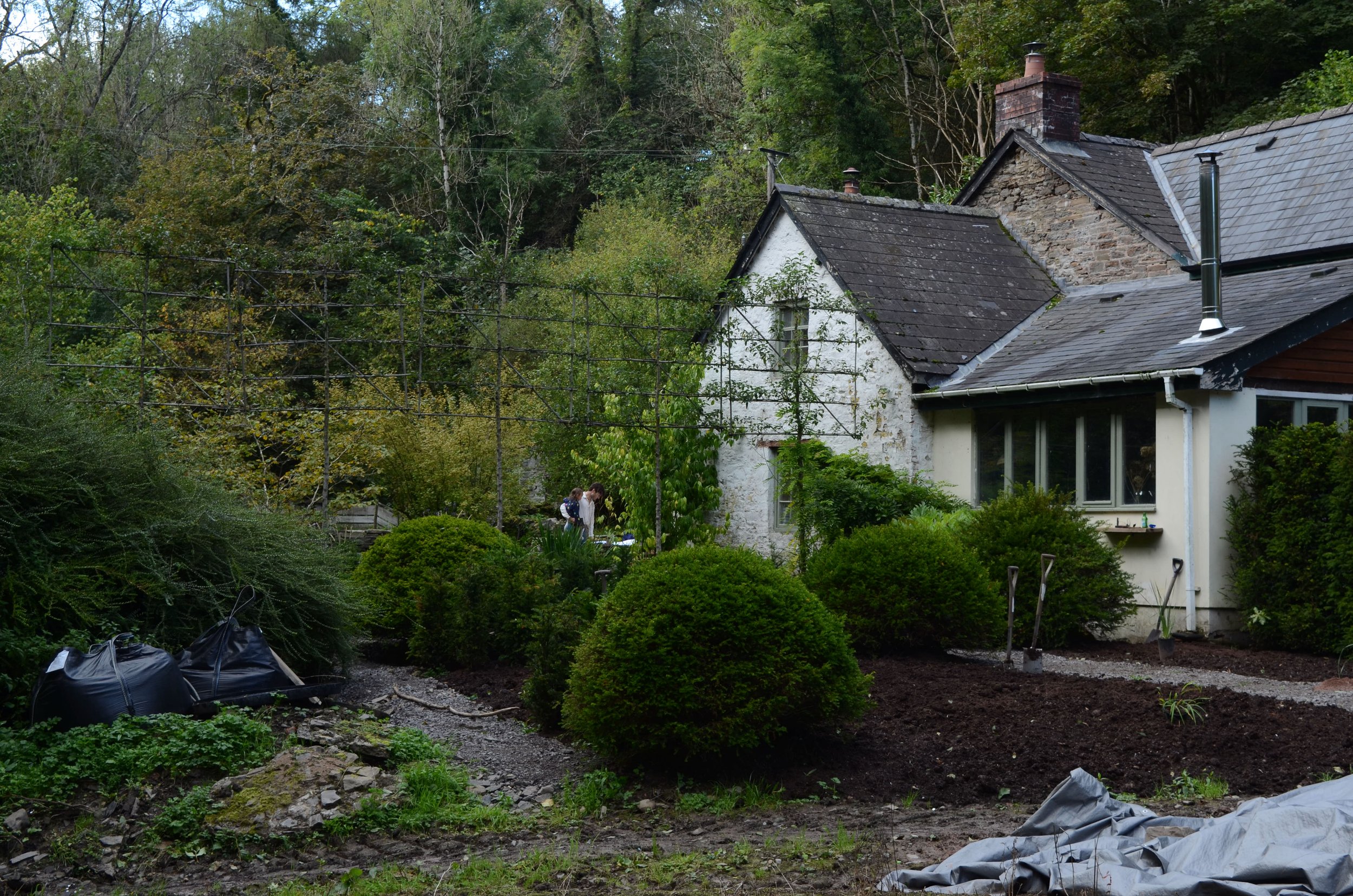underlying structure

We have had the benefit of enjoying the structure in the garden this year without the distraction of lawn, meadow and perennials. It has provided a time of clear thinking, a moment to appreciate the bones that would normally only lay bare come winter. It felt right to create a permanent framework to the garden, this narrow opening of cultivated ground that is otherwise adhering to its surrounding deciduous landscape. Early on, the discussion had been whether to use Fagus or Taxus, two species that would provide the garden with the necessary form, but come autumn and winter provide two very different characteristics. After experiencing the woodland and its seasonal flourishes over the past three years we came to the conclusion that Taxus would provide a more static presence allowing the autumnal exhibition to unravel around it and the woodland to be celebrated.
The garden, just under an acre, is made to feel much larger due to the divides that happen within. We have been careful to create a series of networking paths that prohibit the whole garden from being revealed at once, rather creating chapters.
The dividing walls and hedges allow glimpses through to undisclosed sections of the garden. These areas, obscured from view, allow for a variation in atmosphere, a change in use and an alternative perspective, and without this separation from each other would struggle to be apart.
The trees and shrubs play an important role. A combination of flowering deciduous natives and ornamentals are positioned throughout the garden, multi-stemmed and informal, with bare forms left pronounced, mirroring the stripped silhouette of the fading woodland. Both the Hamamelis and Chimonanthus disclose a winter flower, a necessary moment of colour and scent during the darker months. Surrounding the seating area and in view from the kitchen window their position near to the house encourages a daily interaction with their proximity to one another enhancing the occassion. Together with the overhanging Elm, Crataegus and Malus assemble the canopy that cast shadow over the secluded courtyard. Two species, akin to the frayed edges of the neighbouring woodland, complement each other with their romantic white blossom and abundant fruits come fall. An attractive proposition for the birds. Opposing a natural character the bare and nobbled trunks of the Pleached Malus create a stilted divide alongside the house, their manipulated form running north/south, further complemented by the parallel Taxus hedge below and 20 yards yonder.
Now entering the tail end of the year the garden feels peaceful with the traces of life slowly fading from the landscape as the hours shorten. Our notebook is full of winter works and it is now a time to implement the plans we made over summer, to establish layers and prepare the garden for the ebullient spring awakening.




